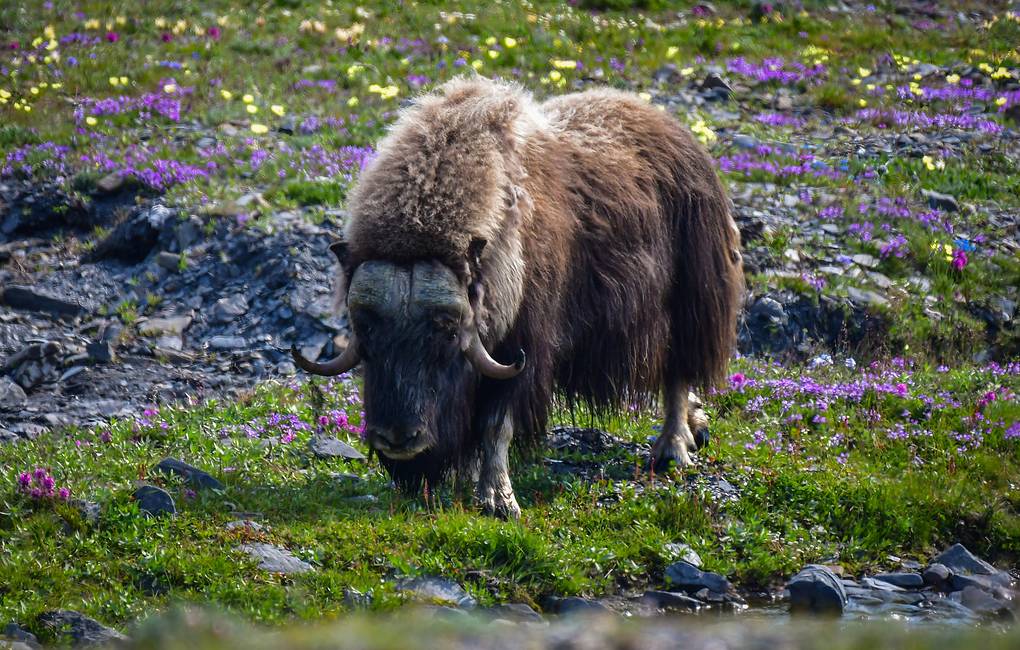Pleistocene Park Reserve in Yakutia expects arrival of bison

YAKUTSK, June 5. /TASS/. A batch of 12 bison will be brought to the Pleistocene Park Reserve in Yakutia's south-east before the end of June, the park's Director Nikita Zimov told TASS.
The Pleistocene Park Reserve is located 150 km south of the Arctic Ocean coastline. Scientists continue there an experiment to recreate the ecosystem of the so-called "mammoth tundra-steppe" that dominated in the Northern Hemisphere during the last glaciation period.
"Our plan is that before the end of June we will bring a batch of 12 bison," the scientist said. "[We will have them delivered] from Hungary with the support of the Andrey Melnichenko Charity Foundation. We need to build up a large population of animals to create a self-sufficient and sustainable ecosystem. I hope, with the support from the foundation, we will expand the park's fenced territory from the current 20 to 160 square kilometers."
In addition, in July - August, scientist plans to make an expedition to the Yamal Peninsula to catch there musk oxen in the Ingilor Nature Park - the world's largest nursery of those animals. "Musk oxen were brought to the Pleistocene Park in 2010 from the Wrangel Island. Unfortunately, all the musk oxen that we managed to capture during that expedition turned out to be males, thus we have not formed the population," he added.
Adaptation of new species
The park is home to nine species of large herbivores - reindeer, Yakut horse, elk, steppe bison, bison, musk ox, yak, Kalmyk cow and sheep. The park's specialists have been experimenting on the adaptation of new species. For example, a batch of 10 camels, brought to the park in 2021, has successfully adapted to the harsh climate.
"Recent studies have found that camels used to live periodically in the Arctic during the Holocene. The main food niche of camels is tall shrubs, but in the park the southern animals spend additionally a lot of time on wet meadows. They have demonstrated that they can live well enough in the Arctic on branch feed. We hope they will have offspring next year," the park's director said.
Downy goats, which were brought to the park in June 2021, have also adapted well. They are the most omnivorous animals, and their main ecological niche is weed control. The Orenburg downy type has turned out to be the most frost-resistant.
Yakut horses inhabit most parts of Yakutia and are well adapted to the harsh climate. Horses were the first animals brought to the Pleistocene Park back in 1996 due to the relatively low cost and availability in the region. They are the park's main pasture animal and they are most adapted to getting food from under deep snow. They feed only on grasses and cereals, thus they do not play a leading role in the vegetation transformation in the park.
Unique experiment
In 1988, ecologist Sergey Zimov organized in Yakutia the Pleistocene Park reserve to experiment on settlement of animals. His son Nikita continues the father's work. The scientific experiment's authors are adamant it is possible to recreate the "mammoth steppes" ecosystem on the territory where now grow mosses, evergreen shrubs and the tundra forest.
According to scientists, during the last ice age, highly productive pasture ecosystems dominated on the planet. "The density of animals, which can now be seen only in a small number of national parks in Africa (such as the Serengeti), existed on all continents. The Mammoth Steppe was the largest of all pasture ecosystems. It stretched from modern Spain to Canada and from the Arctic islands to China," the specialist said.
Millions of mammoths, bison, horses, deer, wolves, tigers and other animals supported their pastures. That ecosystem existed in a wide range of climates and survived several glaciation cycles. "The idea of the Pleistocene Park is to reverse the ecosystem transformation that happened 10,000 years ago. If the decrease in the number of animals for a sufficiently long time allowed highly productive ecosystems to be displaced by low-productive ones, then the opposite is also true," the project's authors say.
From the snow trampling on winter pastures will benefit the permafrost, as its melting threatens the destruction of buildings and infrastructures and which caused greenhouse gas emissions into the atmosphere. Additionally, grasses and cereals that are lighter than forests and shrubs provide for direct climate cooling by the albedo effect, which emerges when sun rays fall on the surface and return back into space.
Such plants also absorb more efficiently carbon dioxide from the atmosphere. "The permafrost is one of the largest reservoirs of organic carbon. Climate warming increases the permafrost temperature, and the local permafrost melting continues in a number of Arctic regions. During this process, microbes quickly transform thawed organic matter into greenhouse gases. Presently, the permafrost temperature is about 5 degrees warmer than the average annual air temperature," the expert told TASS.
This difference is associated with the formation of a thick snow layer in winter, which covers the soil and prevents its deep freezing. In pasture ecosystems, animals trample snow in winter when searching for food. In that case, snow loses its insulating abilities, and the permafrost soils freeze much harder in winter. That way, the permafrost is protected from melting.
Photo by Yuri Smityuk/TASS





